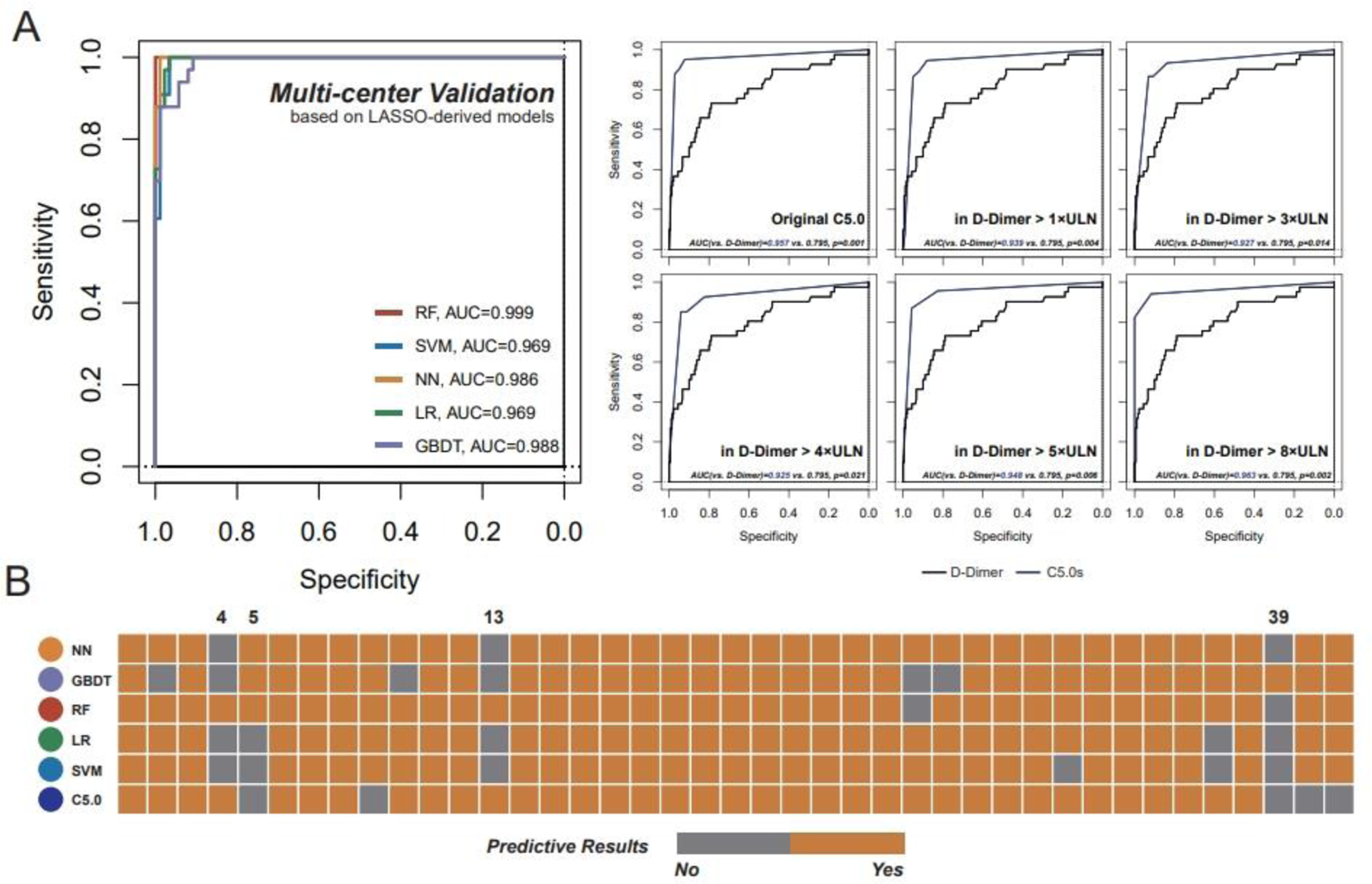

Background: Pulmonary embolism (PE) is a severe and acute cardiovascular syndrome with a high mortality among patients with autoimmune inflammatory rheumatic diseases (AIIRD). Accurate prediction and timely intervention play a pivotal role in enhancing survival rates. However, there is a notable scarcity of practical early prediction and risk assessment systems of PE in patients with are scarce.
Objectives: To investigate the potential value of PE prediction in AIIRD patients with different machine learning models.
Methods: In the training cohort, 60 AIIRD with PE cases and 180 age-, gender-, and disease-matched AIIRD non-PE cases were identified from 7254 AIIRD cases in Tongji Hospital from 2014 to 2022. Univariate logistic regression and LASSO were used to select the clinical features for the further training with machine learning (ML) methods, including RF, SVM, NN, LR GBDT, CART and C5.0. The performances of these models were subsequently validated using a multi-center validation cohort.
Results: In training cohort, 24 and 13 clinical features were selected by univariate LR and LASSO strategies, respectively. All five ML models ( RF , SVM , NN , LR , and GBDT ) showed promising performances, with an AUC of 0.962–1 in the training cohort, and 0.969–0.999 in the validation cohort. CART and C5.0 trees achieved AUCs of 0.850 and 0.932 respectively in the training cohort, respectively. Using D-dimer as a pre-screening index, the refined C5.0 model achieved an AUC exceeding 0.948 in the training cohort, and an AUC above 0.925 in the validation cohort. These results markedly outperformed the use of D-dimer levels alone (Figure 1).
Conclusion: ML-based models prove to be precise for predicting the onset of PE in patients with AIIRD exhibiting clinical suspicion of PE.
REFERENCES: NIL.
Performance of the ML models/ML derived tree with multicentric data. (A ) 41 AIIRD PE cases for validation were collected from 4 different centers. The left panel of the ROC curves showed the predictive performances of five ML models based on LASSO selected features on the validation cohort; the right panel of the ROC curves showed the predictive performances of original C5.0 tree and D-Dimer combined C5.0 tree (dark blue line). The ROC curve of D-Dimer alone in validation cohort was plotted with “black line”. (B ) Heatmap showed the detailed predictive performance by the 6 ML models/ML derived tree. Each square represented one single case in these 41 AIIRD PE patients. Patients who were able to be identified by the corresponding predictive model were marked in orange, others were in gray.

Acknowledgements: NIL.
Disclosure of Interests: None declared.